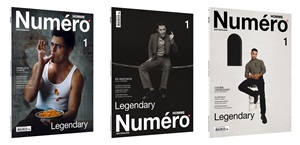
The Coat, What Value Does it Have in Men’s Clothing Today?
The origin of the coat as we currently conceive of it dates back to the late 17th and early 18th centuries. Initially, there was the marsine (a black evening tailcoat), then the ridding coat (riding coat), soon known as the redingote throughout Europe. The coat, the principal piece of the men’s wardrobe, evolved further with the English and French cultures.
It transformed from the overcoat/tailcoat to outerwear through the natural evolution for functionality and efficiency. For example, riding a horse, it is essential to allow ease and movement of the legs. Thus, the coat began transforming with a structure on the top of the torso with buttons and descending softer from the waist down.
While the birth of the overcoat is counted primarily as a men’s garment, covering and complementing the formal 3-piece for men, its differentiation into different categories is still as we recognise it today, stems from inspirations permeated by military clothing and/or spontaneous trends that came to life through prominent members of the English and French bourgeoisie. Such as the paletot (a loose outer jacket), a raglan (an overcoat with sleeves that continue in one piece to the neck), a duffle coat (named after the Belgian town of Duffel, a thick cloth coat with a hood), a chesterfield (a formal, dark knee-length overcoat with a velvet collar), a loden (a coat made of thick water-resistant wool), brooks brothers (a duster trench coat), and later the trench coat made of waterproof heavy-duty fabric.
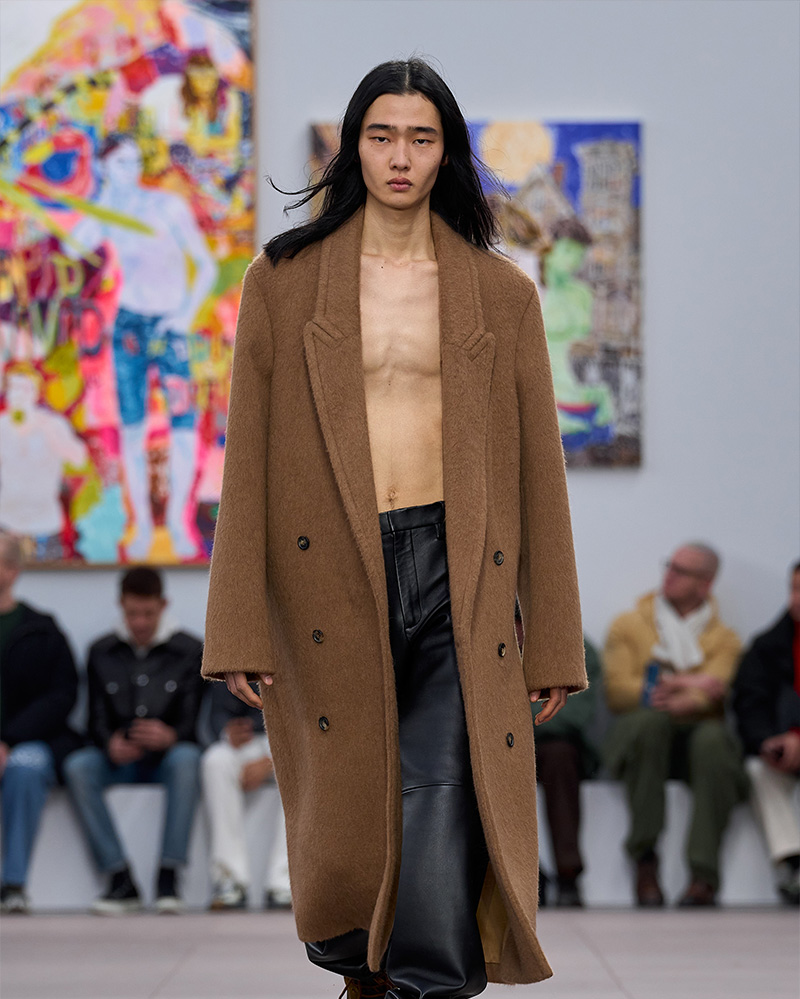
Loewe, Menswear Fall/Winter 24 collection.
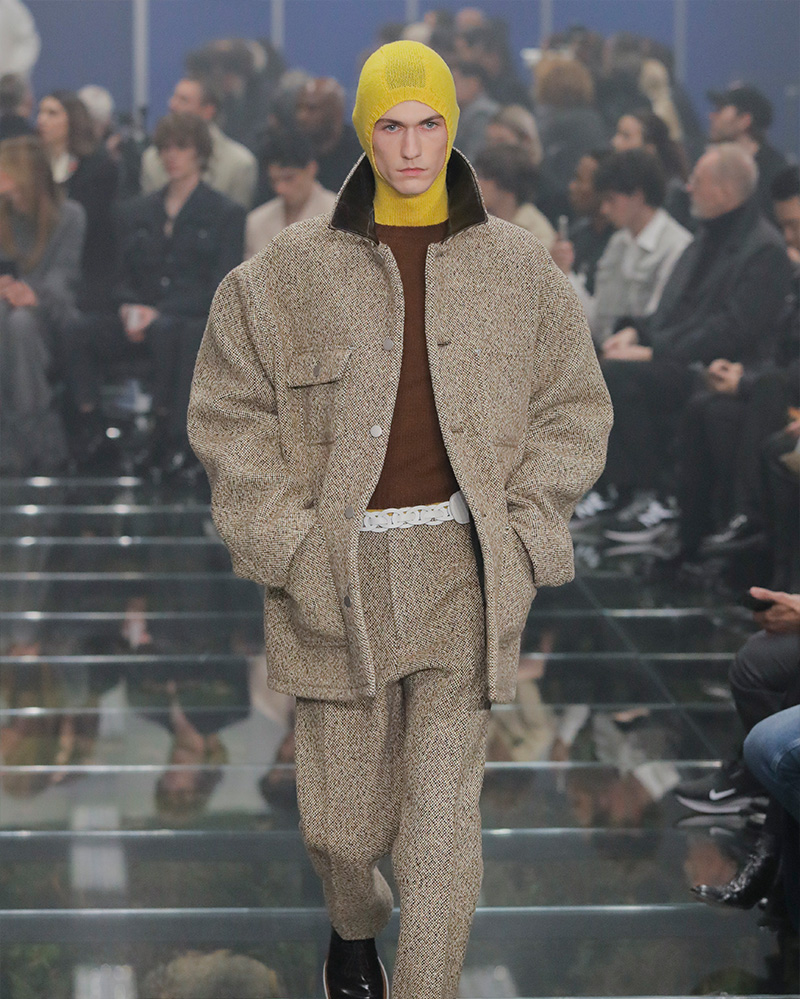
Prada, Menswear Fall/Winter 24 collection.
While the history of the coat’s birth, growth, and evolution can be studied through fashion history books, what insights and speculations can we offer regarding the broader fashion system landscape, as opposed to the subcultural trends that currently animate the streets? What spontaneous trends emerge in our urban contexts?
After all, what else could we call a “coat”, if not the most archaic garment par excellence, indispensable for covering the human body with an animal “coat” to protect against cold and stormy weather since the earliest of times? The reflection on the role of the coat today focuses precisely on covering oneself, both out of necessity and choice.
Initially, the coat’s universal presence in wardrobes worldwide was due to its functional utility. Today, however, it has evolved into a fashion product, serving a practical purpose and a means of self-representation, showcasing one’s stylistic identity in daily life. While it was once primarily associated with winter collections, we now find various models of outerwear in many summer collections. Brands like Dior Homme, Fendi, Balmain, Alexander McQueen, and Junya Watanabe, among countless others, include diverse product categories, irrespective of seasonality, to remain competitive in an increasingly demanding market.
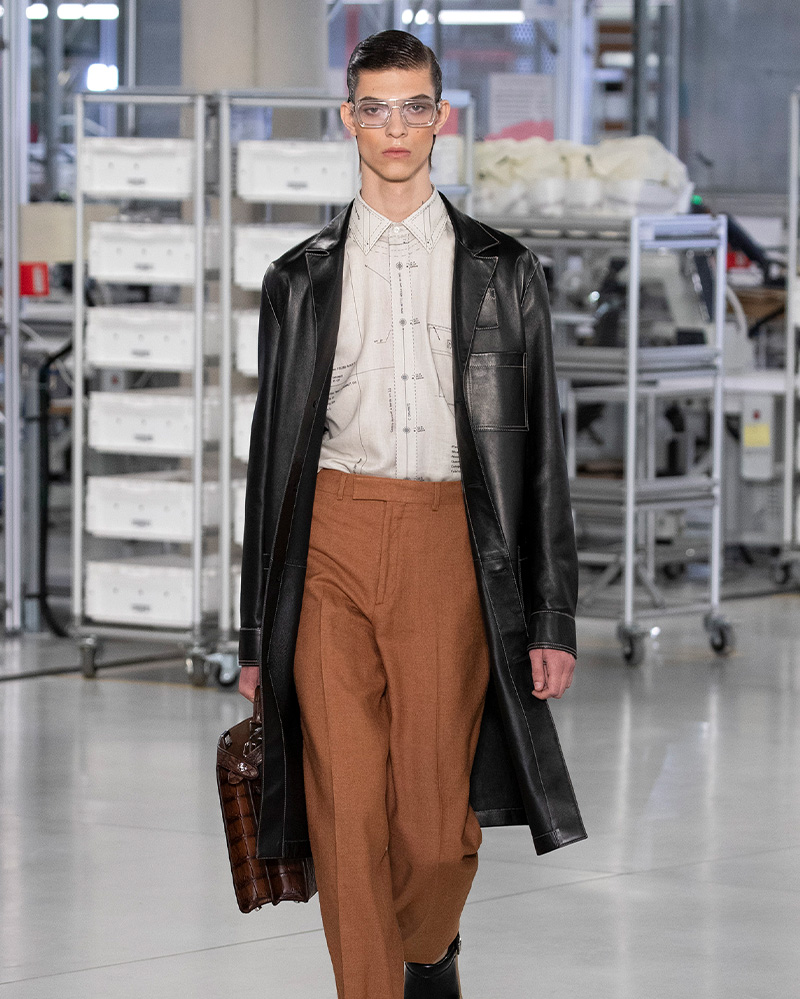
Fendi, Menswear Spring/Summer 24 collection.
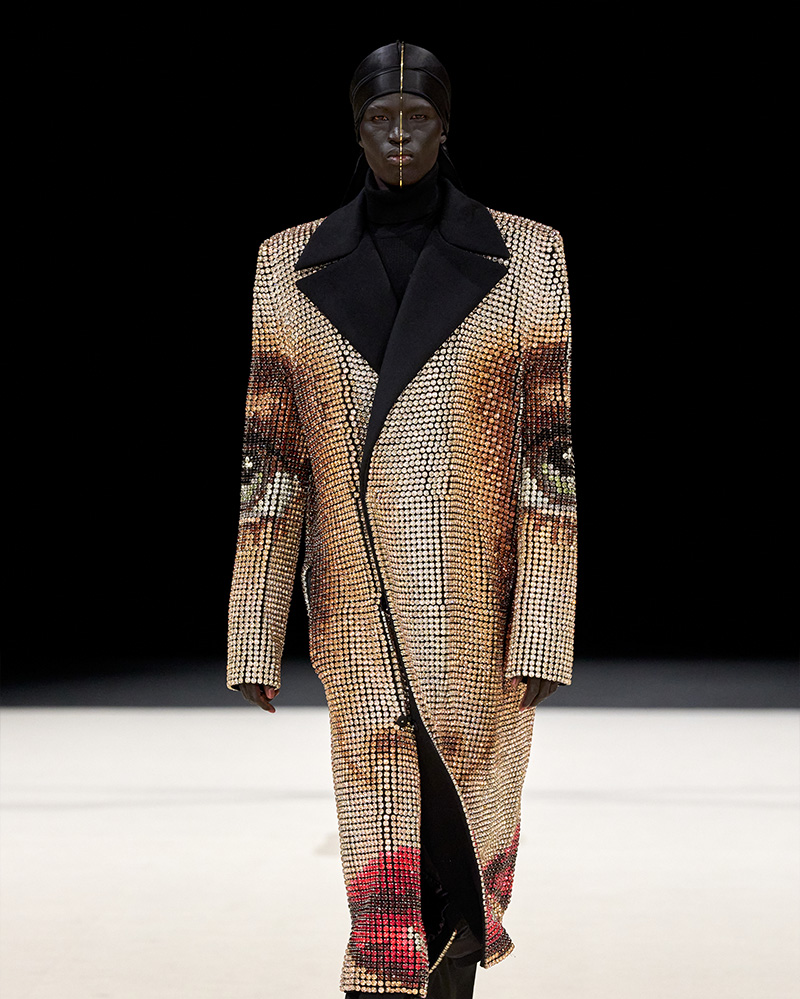
Balmain, Menswear Fall/Winter 24 collection.
This shift reflects the evolving purchasing tastes driven by trends, which are becoming increasingly sudden, frantic, and immediate. It also mirrors a constantly changing society, with changing lifestyles and habits, leading to different purchasing needs from season to season. Until the early 2000s, it was familiar for the Western mass audience to reuse the same products for extendedperiods, buying new items for style and functionality at specific times of the year. Notably, essential garments like coats were typically used only between October and March, the coldest months of the year.
In recent years, however, a reversal has occurred. Given an increasingly mobile lifestyle across different nations, cities, and latitudes, climate change, and varying customs and traditions that lead people to favour cold and mountainous places even during summer, the coat has evolved from a seasonal staple to a year-round wardrobe essential. The coat now often features unlined or lightweight fabrics, as seen in Balenciaga’s pre-fall 2024 collection, which showcased coats under the blazing sun of Los Angeles. This shift symbolises a cosmopolitan lifestyle where it becomes familiar to purchase swimsuits during the Christmas season and coats in late August.

Balenciaga, Menswear pre-Fall 24 collection.
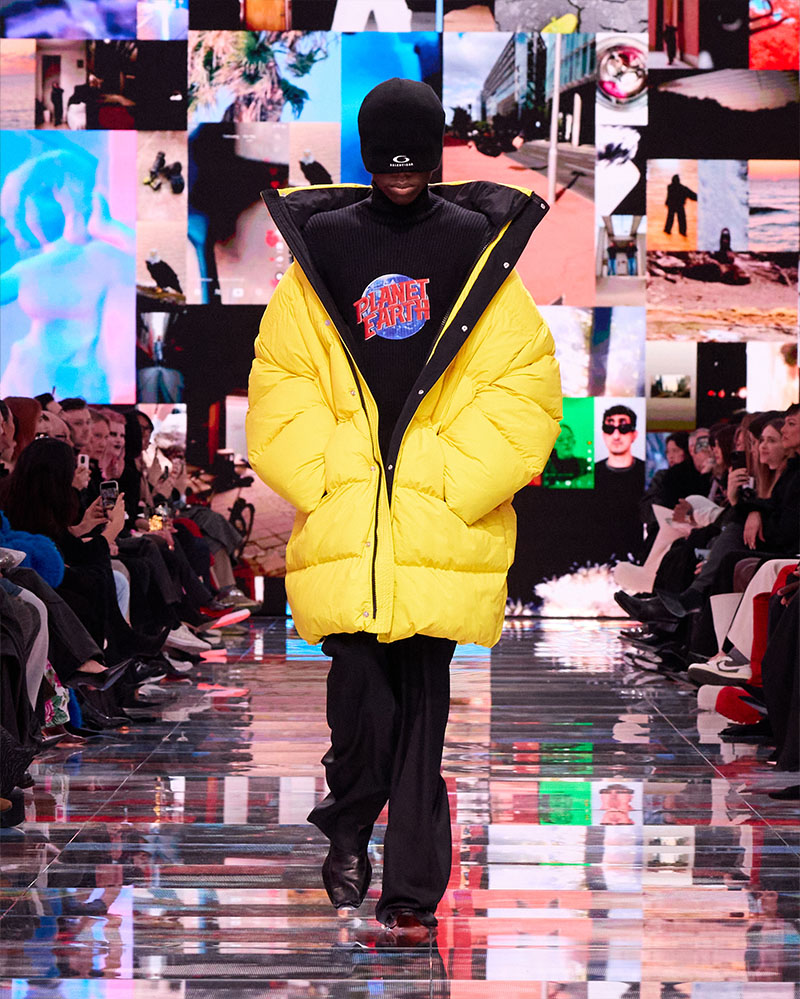
Balenciaga, Menswear Fall/Winter 24 collection.
Despite the shift in its functional role, the coat remains the most essential garment for representing a man’s look in any collection. Elements such as the shoulder structure, waist shape, number of buttons, materials, colour palette, sleeve width, pockets, and embroidery all contribute to its significance. These details not only define the outerwear but also encapsulate the entire stylistic intention of the collection, making it a central piece in men’s fashion.
Therefore, the coat’s function has evolved from merely providing coverage to framing and validating the message of each individual look. This transformation is evident in the latest collections. For instance, in Margiela Artisanal’s Spring 2024 couture show, models with theatrical poses wore luxurious coats that covered almost their entire bodies, revealing only small portions of their faces. These designs, with their deep references to the Parisian suburbs of the early 1900s, highlighted the coat’s role in conveying a powerful stylistic narrative.
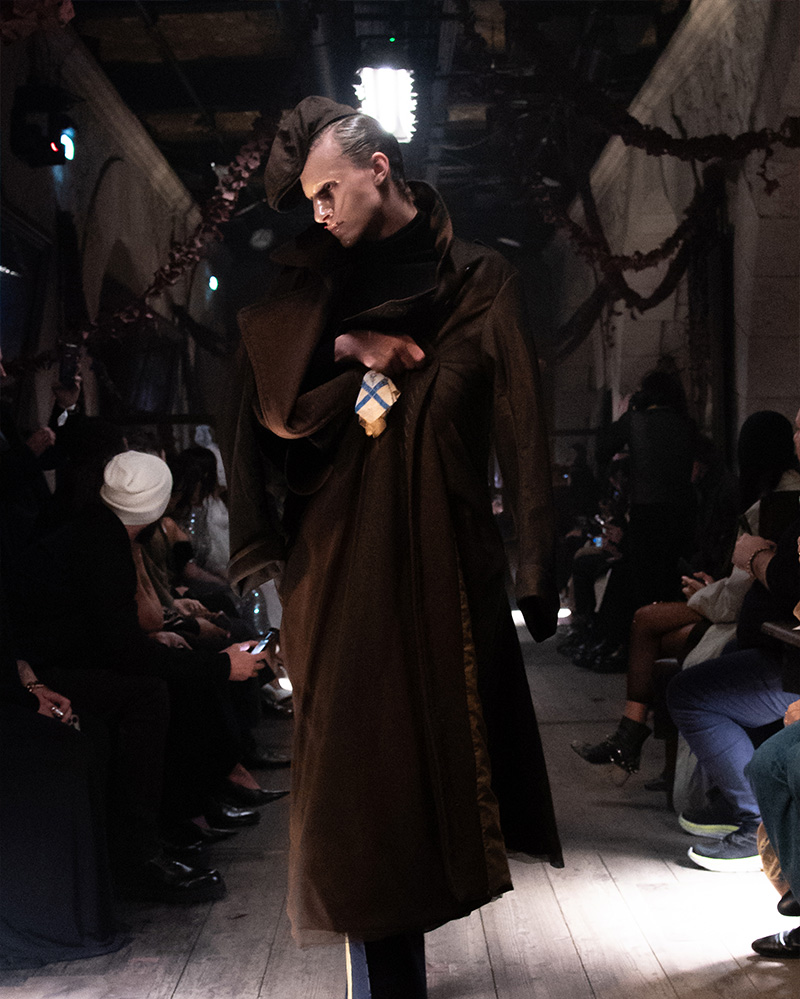
Maison Margiela, Artisanal Couture Spring/Summer 24 collection.

Thom Browne, Menswear Fall/Winter 24 collection.
Inspired by English tradition and coats of naval origin, the Fendi and Prada shows in the Fall/Winter 2024 collections reflect a rich heritage. Fendi presented splendidly textured coats from Loden to Fisherman styles, embodying a country bourgeois feel typical of the English countryside. The colour palettes varied from undergrowth green to neutrals and greys, showcasing a spontaneous mix of contemporary and historical elements that epitomise the fashion house’s taste in men’s collections. In its January collection, Prada, on the other hand, featured tweed coats, tight-fitting raincoats, and oversized double-breasted maxi coats in leather or navy-inspired nylon. These unique and original pieces are representative of the brand’s signature style and are sure to be must-haves for next winter.
Outerwear thus becomes the pinnacle of the stylistic intention for each season. Consider the luxurious embroidery on Balmain’s garments, the coats resting directly on the bare skin in Loewe’s collection, the sleek and unattainable fur and leather coats of Dolce and Gabbana, and Thom Browne’s unstructured, visionary designs. Not to be overlooked is Burberry’s iconic trench coat, which has become a signature emblem of the brand’s identity.
In conclusion, the coat has become the spearhead and most distinctive garment of men’s fashion shows. It now showcases rather than merely covers, creating a stylistic piece that makes it a unique and essential element in every collection.
photos COURTESY BY THE BRANDS
author MIRKO DE PROPRIS

